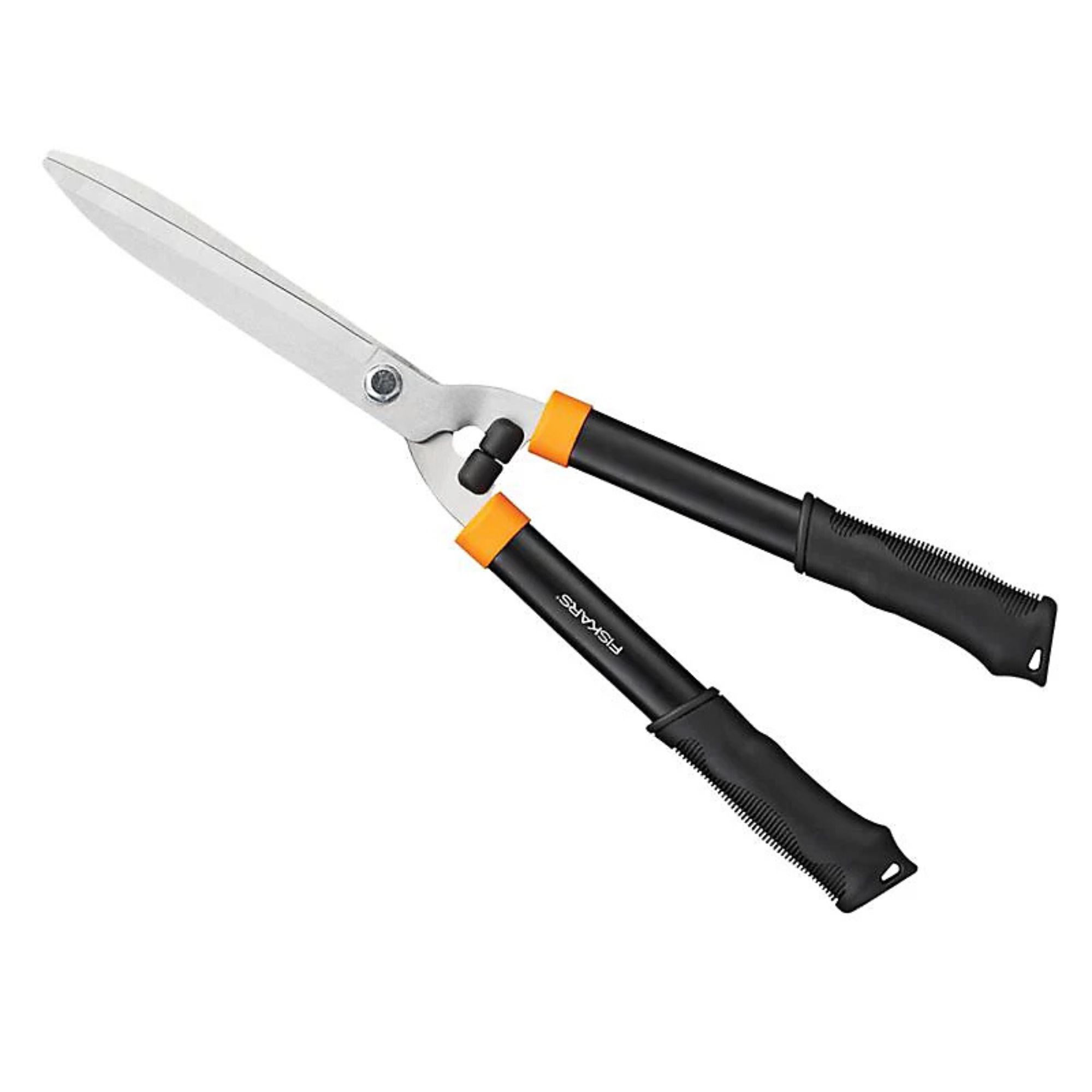7 perennials to cut back in August for a second flush of autumn flowers
Take some time to cut back these perennials now say the experts and you’ll be rewarded with more blooms later on
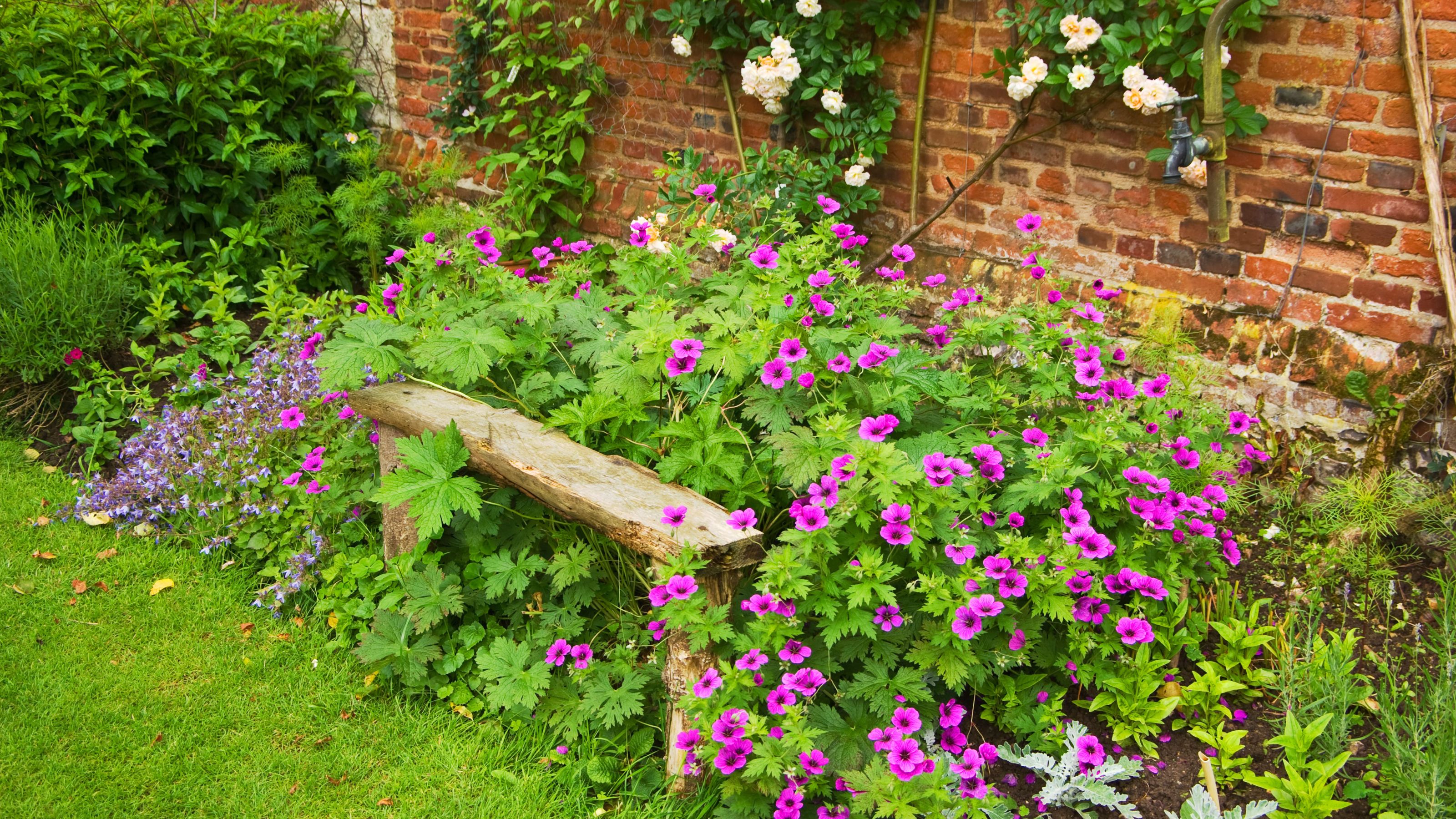

August is the height of summer and the time when many of us are outside non-stop enjoying our gardens and making the most of the sunshine. But if your flowers and plants are looking past their best and starting to flag, knowing which perennials to cut back in August for a flush of autumn flowers will ensure that your garden is soon looking tip-top again.
‘Cutting back some long-flowering perennials in August is a great way to keep your borders looking fresh and, in many cases, encourage a second round of blooms as we head into early autumn,’ says David Denyer, flower and garden expert at Eflorist.
‘At this point in the growing season, many perennials have already put on their main show of flowers and start to look a bit tired or leggy. Cutting them back now with sharp secateurs helps redirect the plant’s energy toward producing new shoots and flower buds, giving you a second wind of colour before the colder months arrive,’ advises Julian Palphramand, Head of Plants at British Garden Centres.
These are the particular ones you should turn your attention to now to ensure a flush of autumnal flowers.
1. Lupins
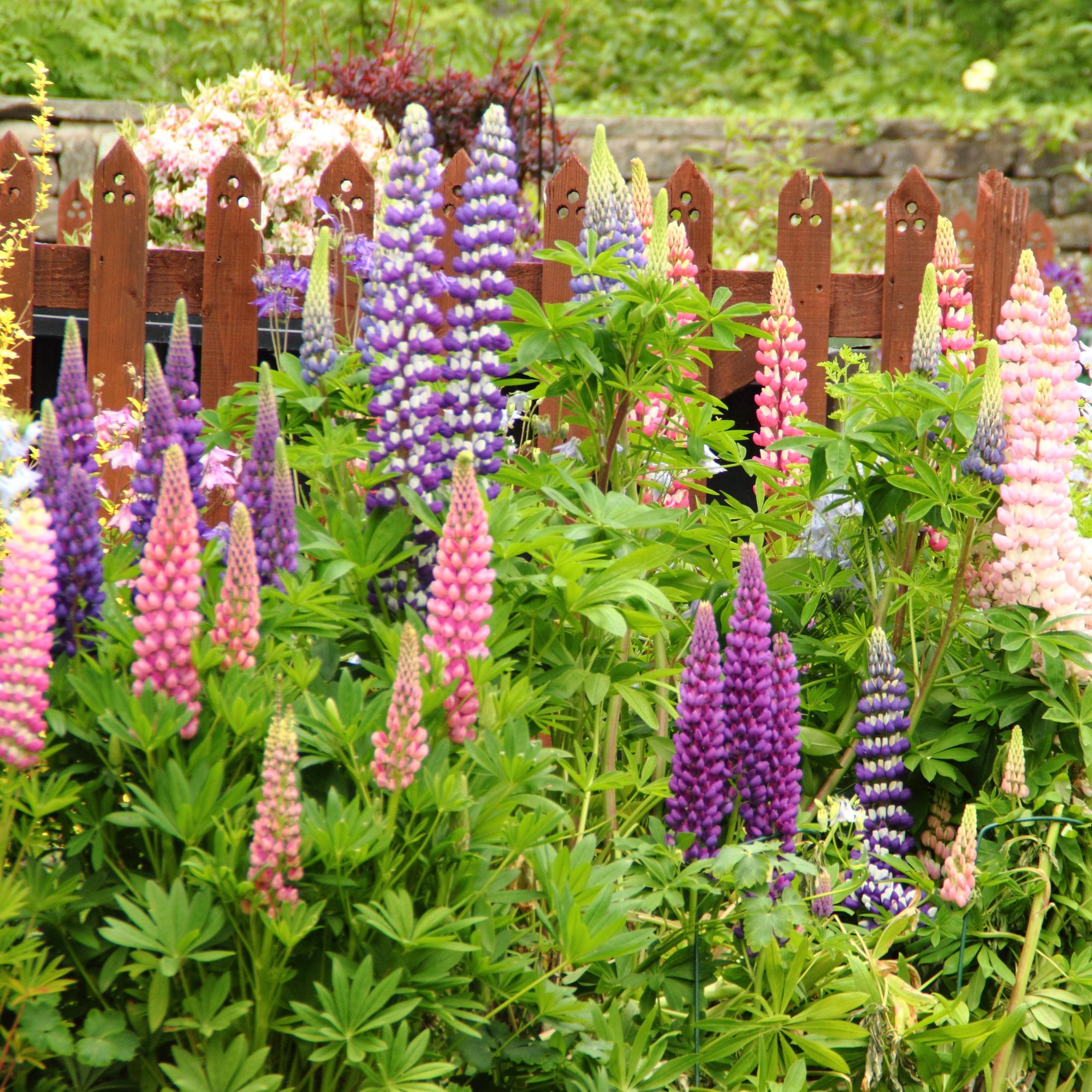
With their tall spikes of colourful upright flowers, lupins look stunning in full bloom and make a fabulous feature in garden border ideas offering height and structure to the space.
In late summer though, lupins can start to fade, with the vibrant colours losing their intensity and the flowers starting to wilt and droop.
‘When it comes to cutting back perennials in August, lupins benefit from cutting just above the healthy buds,’ advises Julian. ‘This is so that the plant knows where to grow next and can produce fresh blooms.’
Sign up to our newsletter for style inspiration, real homes, project and garden advice and shopping know-how
Where to buy lupins:
- Thompson & Morgan: Try the multi-coloured Lupin 'Gallery' from £9.99.
- Crocus: Or go for the bold all-red Lupinus 'Beefeater', from £12.99.

Julian Palphramand is Head of Plants at British Garden Centres. He was previously Horticulture Buyer at Wyevale Garden Centres and has extensive knowledge of various plants and advice on the best approaches to growing them.
2. Delphiniums
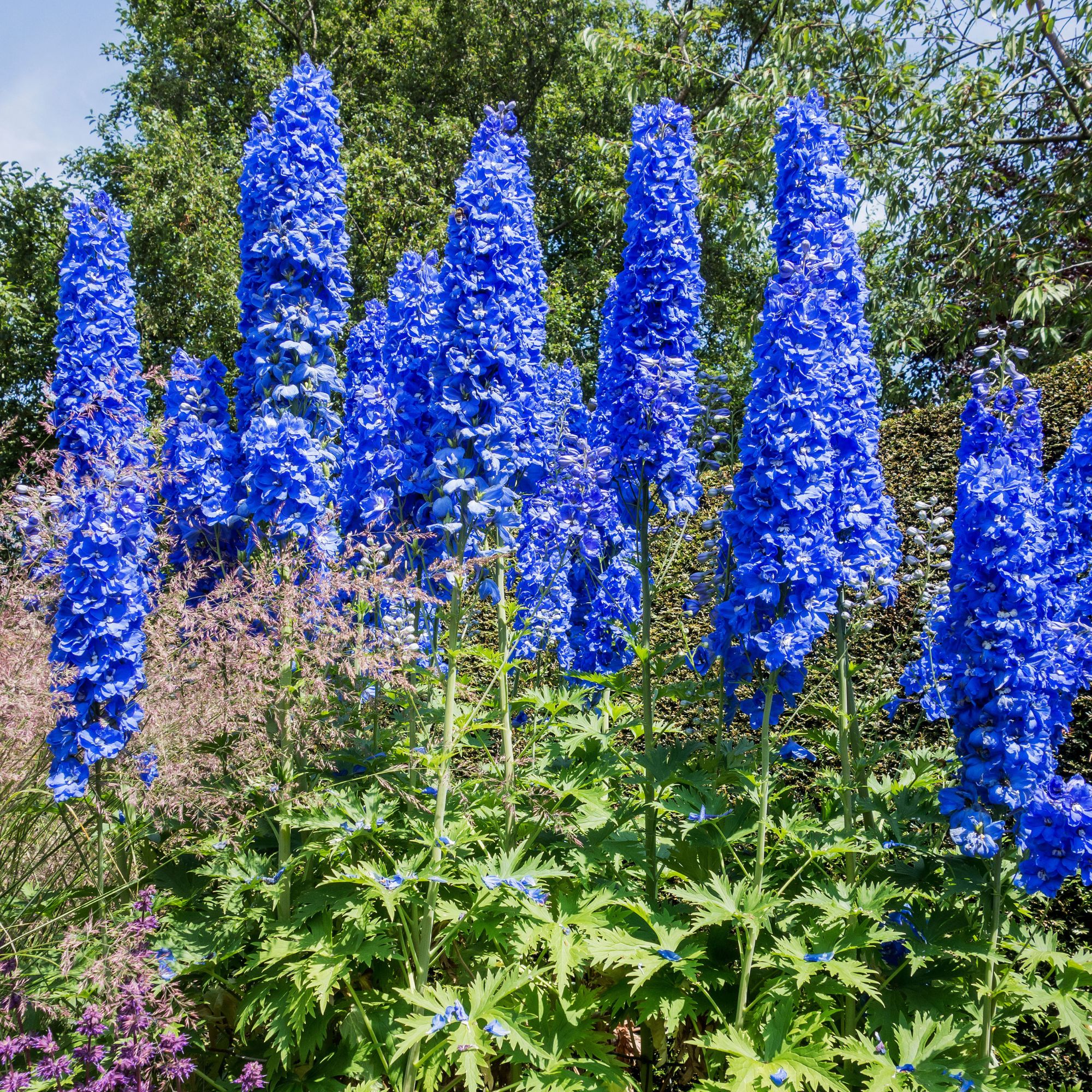
Another upright flowering perennial that looks brilliant in flower bed ideas or a cottage garden scheme, delphiniums typically tend to flower from spring to early summer, but can bloom again in late summer or autumn if cut back after the initial flowering.
‘For delphiniums and salvias, you don’t need to cut them all the way to the ground,’ advises David, ‘but you should remove the faded flowering stems and trim back to healthy growth points lower down.’
Where to buy delphiniums:
- Sarah Raven: Go for the pretty pale blue Delphinium border collection, £29.95.
- Thompson & Morgan: Or mix up your border scheme with the colourful Delphinium 'Pacific Giants Mixed', from £9.99.
3. Hardy geraniums (cranesbill)

Hardy geraniums (commonly known as cranesbill geraniums) have masses of saucer-shaped flowers that range in colour from purple, mauve and pink to white. Super-easy to grow, hardy geraniums need very little looking after and make excellent ground cover plants as they spread very easily.
While hardy geraniums have a fairly long flowering season, they can get a little straggly and overgrown by mid-summer, so cutting them back in August is a great way of encouraging a second flush of blooms.
‘Cranesbill geraniums like a very hard prune, right down near the base, which might seem drastic, but it encourages fast rejuvenation and new flowers to appear quickly,’ says Julian.
Where to buy hardy geraniums:
- Suttons: The ever-popular Geranium 'Rozanne', from £7.99, makes a brilliant ground cover plant.
- Dobies: Or go for the Geranium Hardy Collection, £19.99 for plants in a variety of colours.
4. Nepeta (catmint)
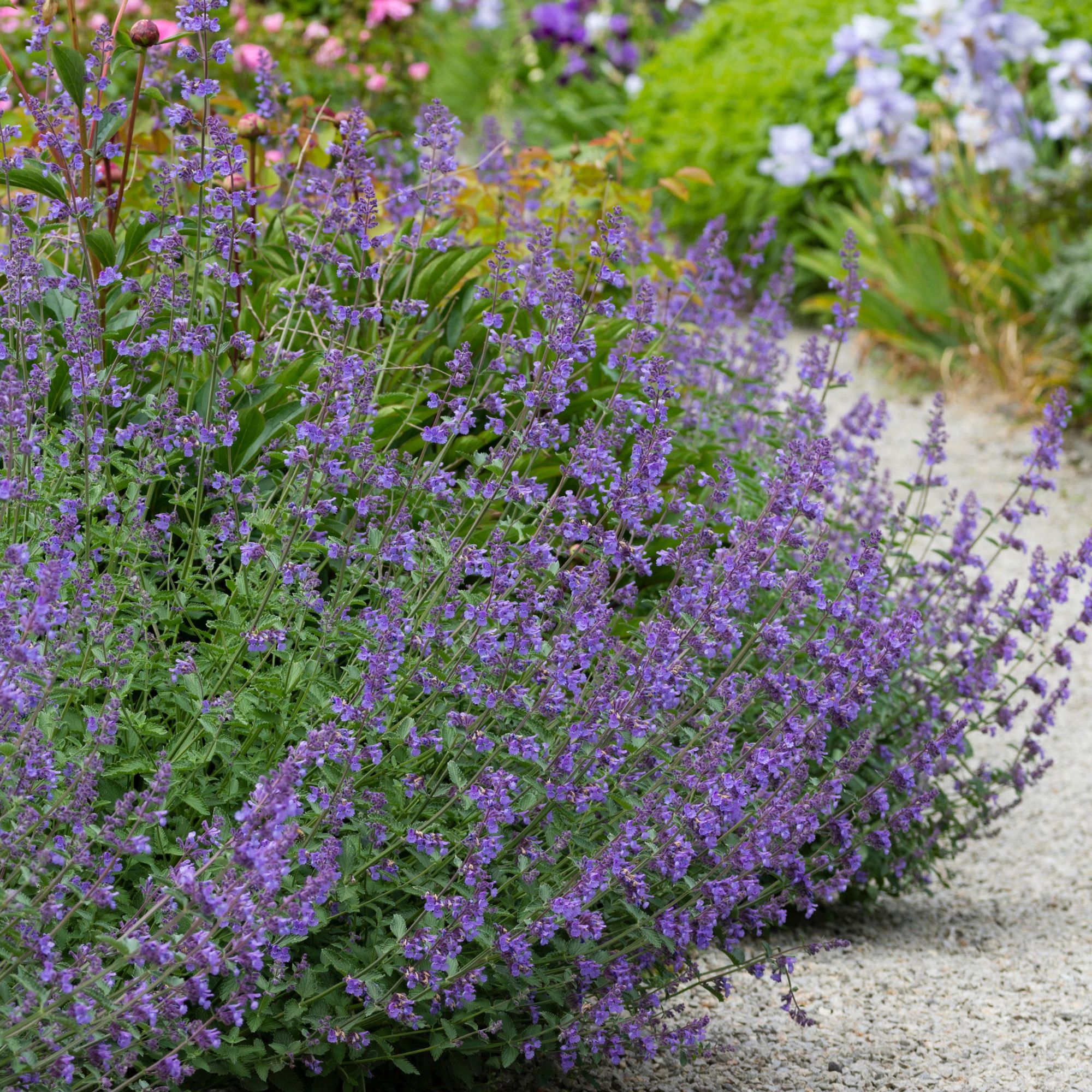
Nepeta (commonly known as catmint) is known for its aromatic foliage and is tough, easy-to-grow and a great companion plant in beds and borders or informal garden edging ideas. Catmint is also one of the best plants for attracting bees and pollinators to a garden.
‘As with hardy geraniums, catmint can be sheared back quite hard to the lower leafy growth, which encourages fresh foliage and often a second flush of flowers in early autumn,’ advises David.
Where to buy nepeta:
- Thompson & Morgan: This white variety, Calaminhta nepeta, from £19.99, is extremely drought tolerant
- Suttons: Or try the purple-toned Nepeta 'Six Hills Giant', from £9.99, which is perfect for a sunny border.
5. Salvias

Salvias are a great garden all-rounder, providing vibrant colour and fragrance in mixed beds and borders, used as underplanting for roses, or simply grown in pots to create colour in container garden ideas.
Salvias benefit from regular deadheading to remove any spent blooms and allow the plant to send more energy towards new growth. In late summer, perennial salvias can also get a bit leggy and out-of-shape which is an ideal time for cutting back.
‘As with hardy geraniums, delphiniums and catmint, perennial salvias also respond well to being cut back once their flowers have faded,’ says David.
Julian agrees: ‘Salvias often prefer a lighter trim, shaping the bush to keep it neat and encourage side shoots that will flower.’
Where to buy salvias:
- Amazon: The YouGarden Salvia 'Lips Collection', £15.99, includes three of the pretty red and white plants.
- Crocus: Or try the bold purple coloured Salvia nemorosa 'Caradonna', from £23.99.
6. Phlox
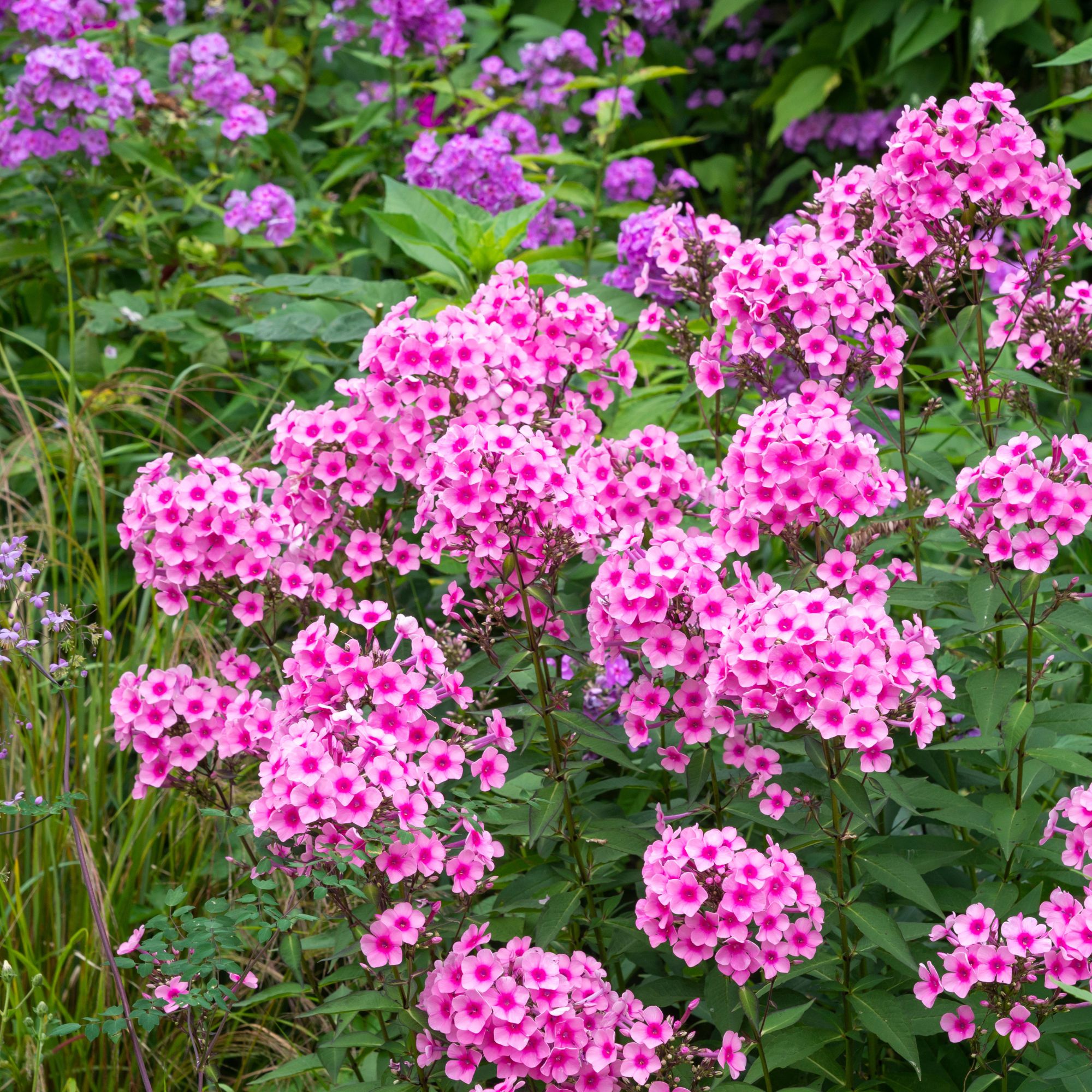
With its prolific, sweet-scented flowers, phlox is a mainstay of any cottage style garden scheme and pairs well with other summer-flowering perennials such as delphiniums, astrantias and campanulas.
Once Phlox has bloomed however, the flowers will turn brown and can wither on the plant, so cutting back will improve the appearance greatly.
‘Phlox is best deadheaded by snipping off spent flower stems to encourage another round of blooms,’ advises Julian.
Where to buy phlox:
- Gardening Express: For a pretty pale pink flowered plant, try Phlox paniculata 'Sweet Summer', £12.99.
- J. Parker's: Or go for the stunning purple-blue tones of Phlox Paniculata Blue, from £4.99.
7. Coreopsis
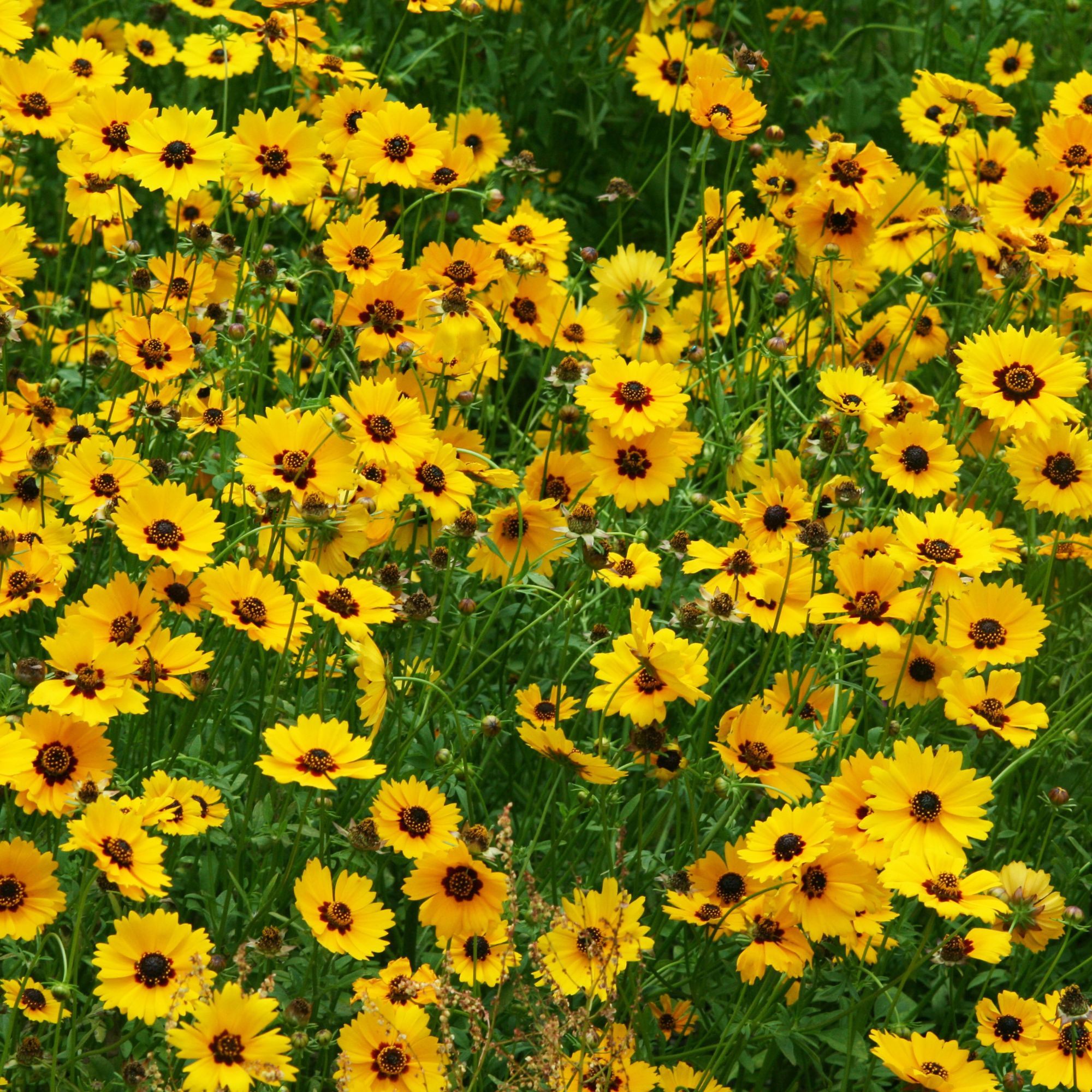
Vibrant summer colour is pretty much guaranteed with cheery coreopsis and its bold daisy-like coloured blooms and bushy foliage. A brilliant filler for beds and borders, it thrives in full sun and is a fairly drought tolerant plant too.
While deadheading will help to extend the flowering period, come mid summer, coreopsis will begin to fade and die off, so August is a great time to cut back.
Cut the stems of plants back by roughly one third, keeping to green growth and avoiding cutting any thick, woody stems. Leave some fresh growth around the base of the plant to ensure another flush of blooms.
Where to buy coreopsis:
- Primrose: The delicate pale yellow Coreopsis Verticillata Moonbeam, from £8.99, is super-pretty.
- B&Q: Or try the sunny yellow-flowered Coreopsis grand 'Early Sunshine', £17.99.
What you'll need
Before you start cutting back perennials or plants you should deadhead for a second bloom, make sure you have the right tools to hand. Pruning shears or secateurs are a must, offering precision for cutting stems up to the thickness of a pencil. A thick pair of gloves to protect hands from sharp foliage is essential too.
For larger perennials with thick woody stems, opt for a pair of hedge shears. The blades of shears and secateurs should be kept sharp to ensure a clean cut, which makes pruning easier and leaves plants less susceptible to disease.
Cutting back key perennials now can help to freshen up your borders and give them a second round of colour when autumn comes around. Cutting back is different to what to prune in August, so make sure you add both jobs to your late-summer to-do list.

Lisa is a freelance journalist who has written about interiors for more than 25 years. Previously editor of Style at Home magazine, she has worked on all the major homes titles, including Ideal Home, Country Homes & Interiors, 25 Beautiful Homes and Homes & Gardens. She has covered pretty much every area of the home, from shopping and decorating, crafts and DIY to real homes and makeovers and now regularly writes gardening stories for Ideal Home.
